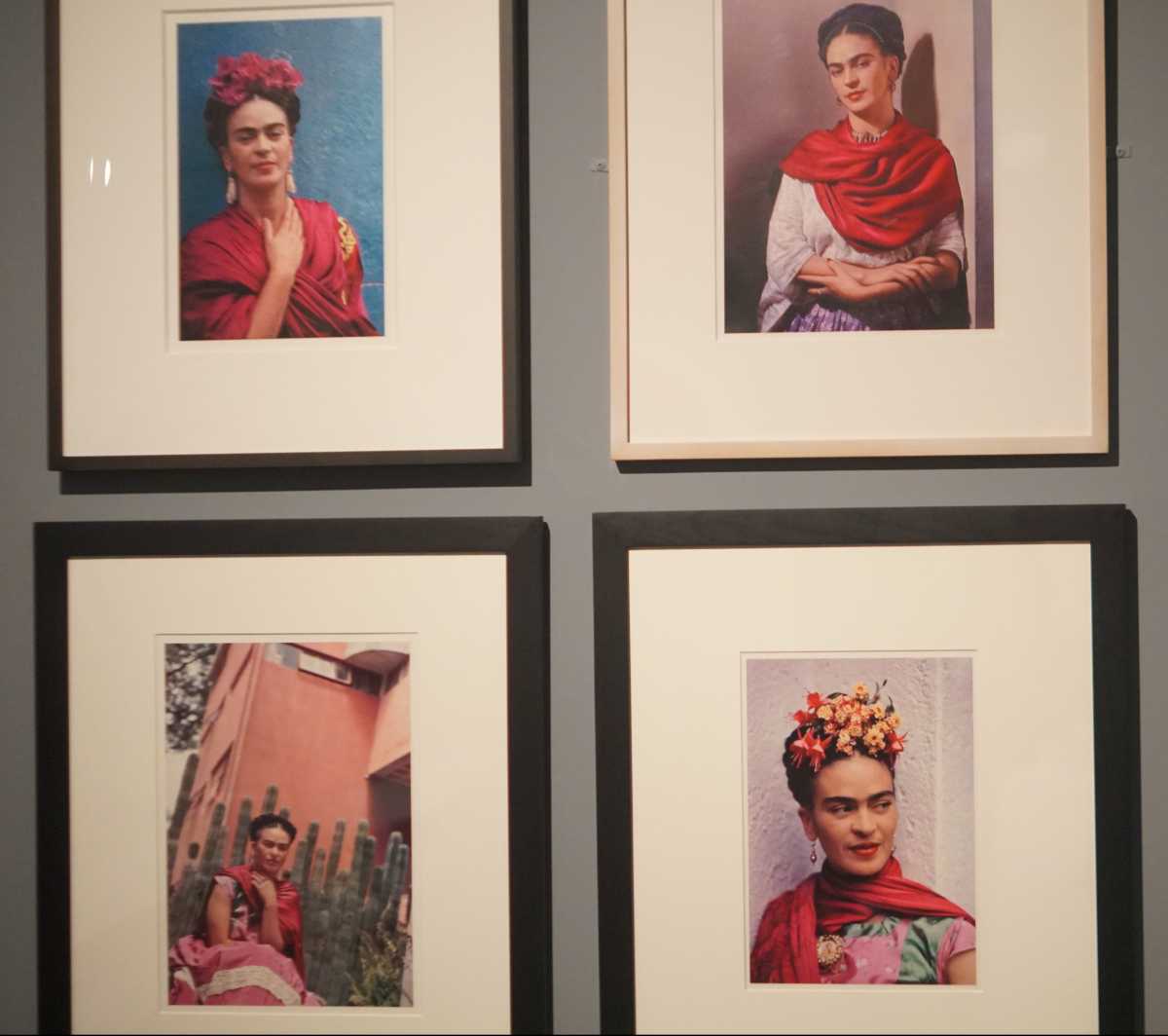I don’t really know the first time I heard Kahlo’s name. I just know that one day I started recognizing her work and face, and from then on I knew her. Not on a personal level, but I was able to recognize not only her work but her face among other artists and painters.
Like many Latinos, recognizing certain significant figures of history can be very personal. As a Colombian-American, I grew up with the works of Gabriel Garcia Marquez around the house and with my parents mentioning his work every once in awhile. Colombians are known for their trademark “dichos” or “catch phrases” which color a person’s life growing up. They teach life lessons but also punctuate life’s funny quirks.
Frida Kahlo seems to be that for Mexican history. One of the first Latino female voices that seemed to captivate audiences worldwide as the wife of a renowned painter and as an enigma who didn’t give too much of her personal life away.
In this modern era, we are constantly asking ourselves if the work of art is different from the artist. Can art and an artist be separated. At the Brooklyn Museum’s Frida Kahlo: Appearances Can Be Deceiving, you get to have an intimate look at the personality that was behind the familiar look of one of Mexican art’s most legendary figures.
“We are absolutely thrilled to feature such an iconic and globally recognized artist in one of her largest exhibitions in New York City to date. Focused on the life and work of Frida Kahlo, the show comes at an important time, when it is critical to build a cultural bridge between the United States and Mexico,” said Brooklyn Museum Director Anne Pasternak, the Shelby White and Leon Levy Director of the Brooklyn Museum.
The exhibition is the largest U.S. exhibition in 10 years devoted to Frida Kahlo, and the first in the country to display a collection of her personal possessions from the Casa Azul (Blue House). The home was the artist’s life long home in Mexico City.
After Kahlo’s death in 1954, her husband Diego Rivera, instructed that their personal belongings be locked away at the Blue House, not to be touched until 15 years after his death. In 2004, these items were unearthed and inventoried. This new exhibit marks the United States debut of more than 100 items from that discovery.
The exhibit is organized thematically into 10 sections that give you a glimpse into Kahlo’s personal life from childhood to her time in the United States to her private home at Casa Azul.
This includes objects ranging from the artist’s Tehuana clothing, to her contemporary and Mesoamerican jewelry and cosmetics to letters and orthopedic corsets alongside works by Kahlo including a selections of paintings and drawings as well as photographs of the artist, all from the celebrated Jacques and Natasha Gelman Collection.
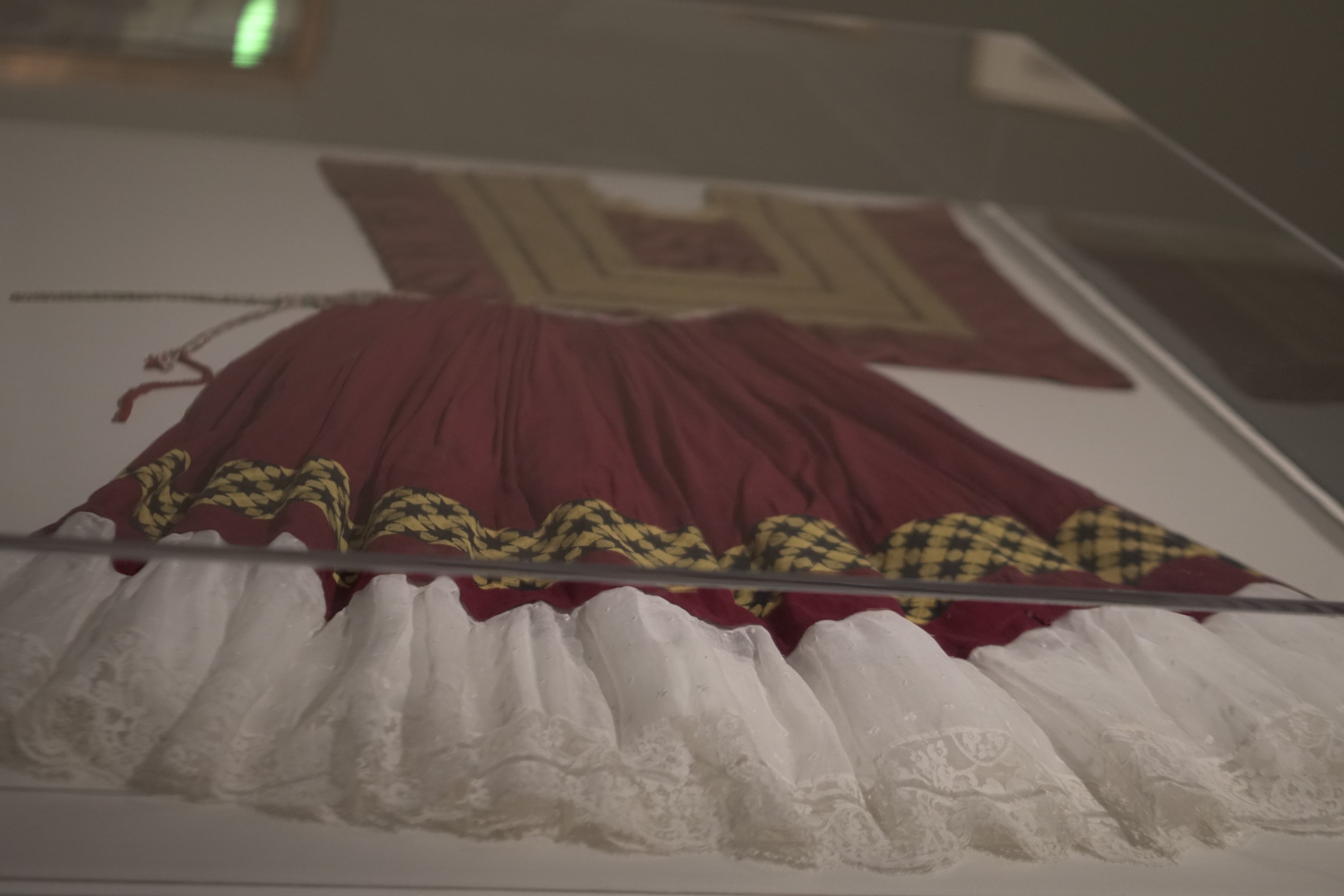
When you think Kahlo you know of her red lipstick, red nails and braided hair decorated with flowers. But what some might not know is that she wore Revlon products including the lipstick shade “Everything’s Rosy”, and “Frosted Pink Lightning” and “Frosted Snow Pink” in nail polish shades from the makeup giant.
In her personal life, Kahlo came to define herself through her ethnicity, disability and politics, all of which were at the hear of her work as an artist. Born to a German-Hungarian father and a half-Spanish, half-indigenous Tehuana mother. Kahlo carefully orchestrated her bold peasant look and by 1930 after the Mexican Revolution, Kahlo had famously adopted the traditional colorful dress of the Tehuana region, a matriarchal society in Oaxaca, Mexico, which she revered for the beauty of its culture and the power it entrusted to women.
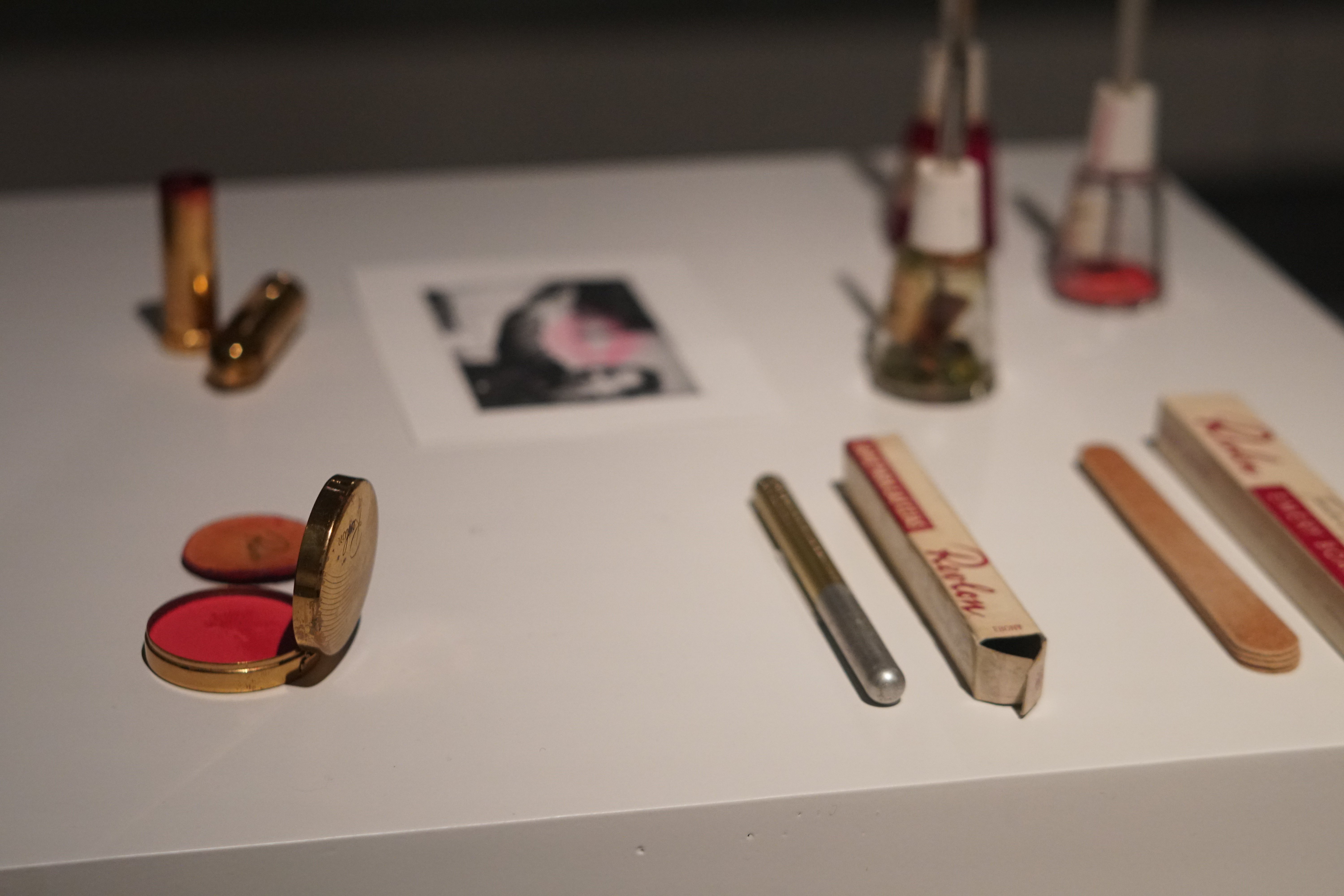
In fact, one of the more memorable moments of the show included a snippet that claimed that Kahlo would re-use her empty perfume bottles, she wore Chanel No.5, as a tequila flask.
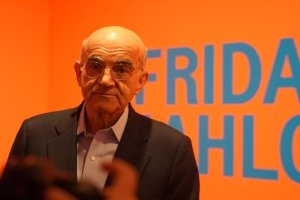
“One of my favorite things about this exhibit is it is more personable than any other Frida Kahlo exhibit I’ve seen and I’ve seen a lot,” said Carlos Phillips Olmedo, Director of the Frida Kahlo Museum at Casa Azul in Mexico City.
I mean standing less than a foot away from this seminal figures personal items almost lets you forget that she was a normal person just living her life the way she wanted, on her own terms.
Circe Henestrosa, curator of the exhibit, is most fascinated by the legendary artist’s prosthetics which she beliefs give you the most introspective look at Kahlo’s physical and emotional battles from having a back brace to not being able to conceive children.
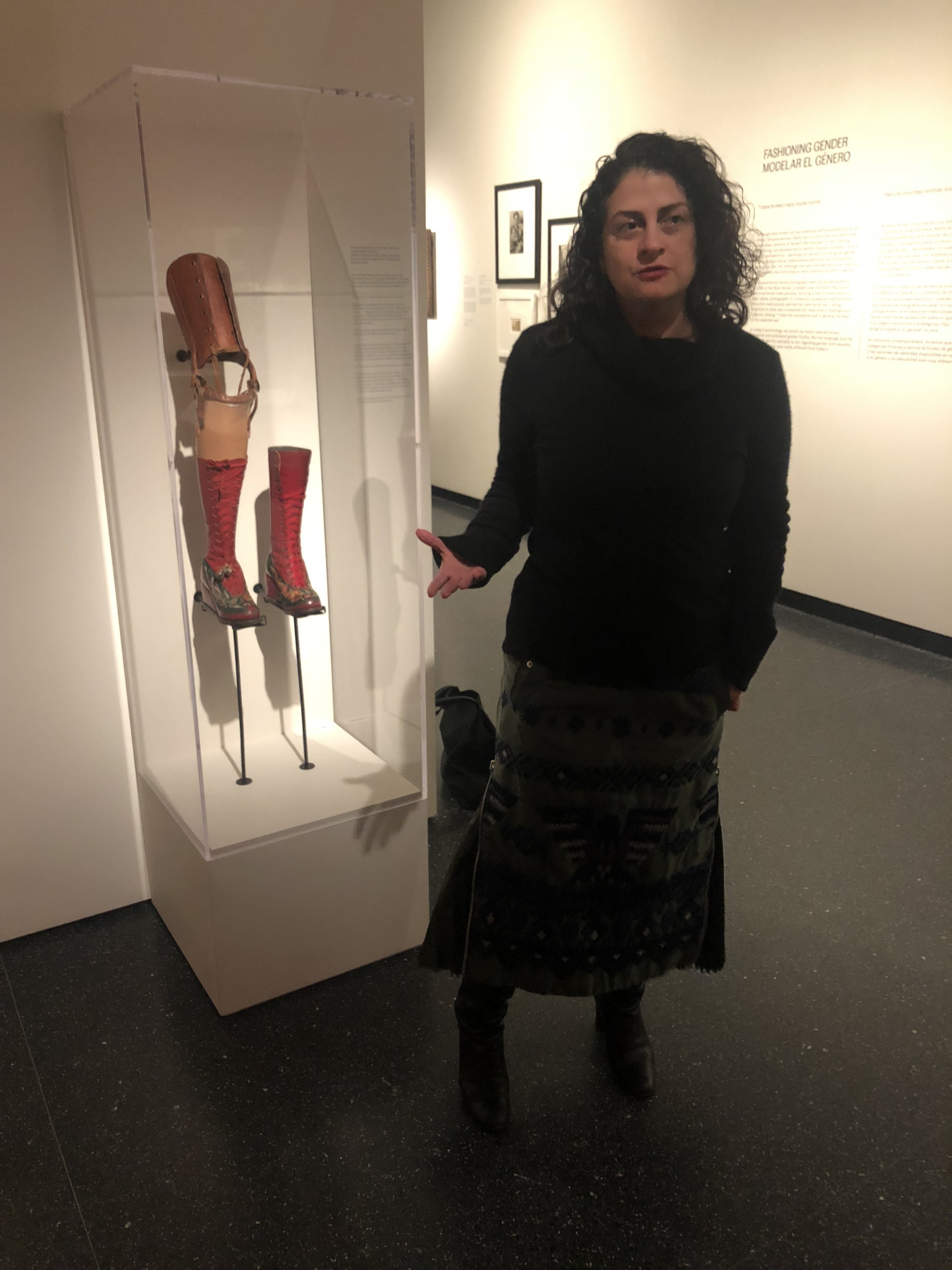
Kahlo’s choice of clothing, though a purposeful statement of her politics, was also in relationship to her well-documented disabilities. Kahlo was afflicted by polio as a child that left her right leg permanently weakened. Then at the age of 19 Kahlo suffered a tragic bus accident that left her with lifelong injuries, including a severely fractured spine. This forced her to depend on prosthetics throughout her life including a series of braces and prosthetics.
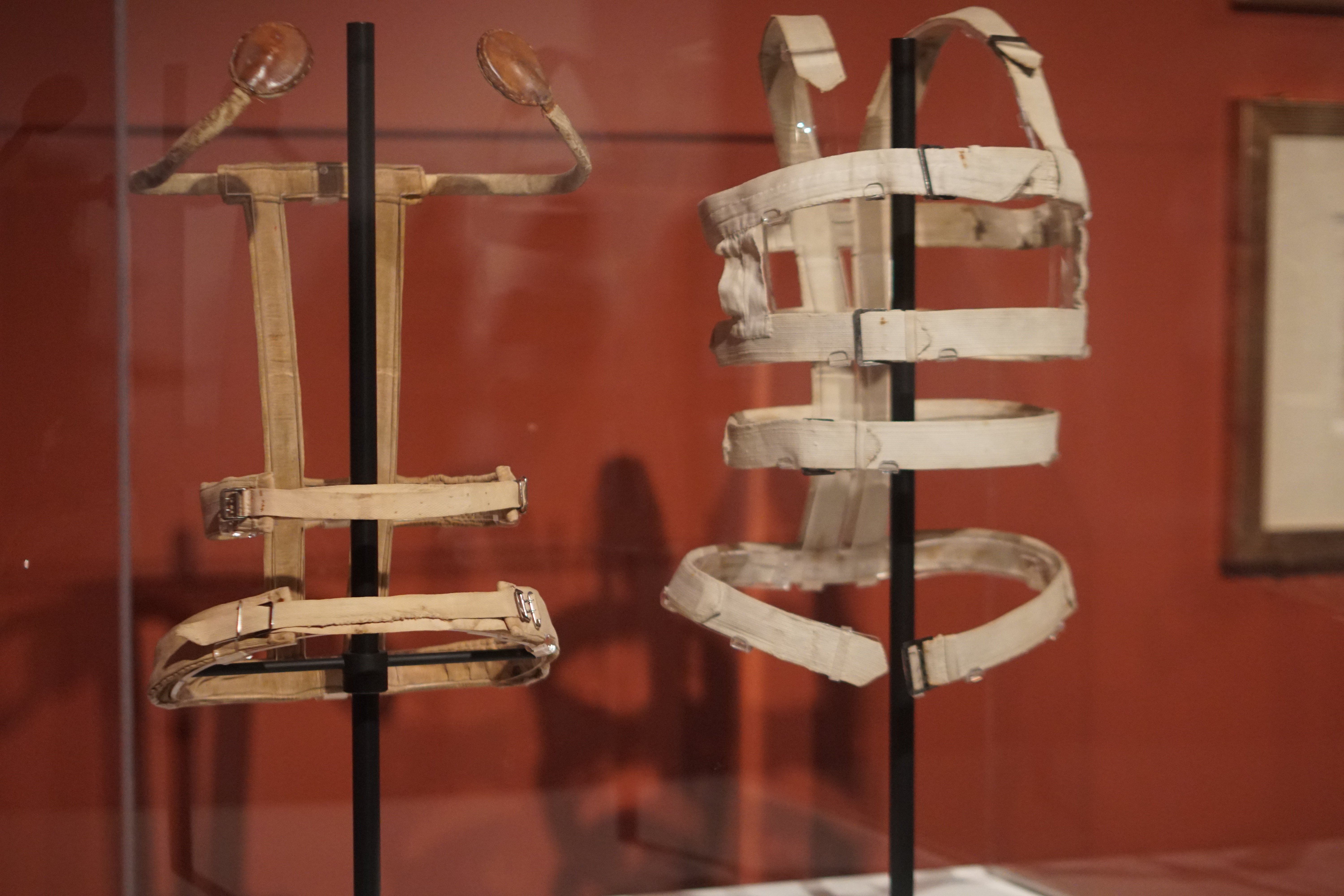
Additionally, part of the exhibits sections includes objects from the Casa Azul which gives you a glimpse at some of the sculptures that littered the famed home in Mexico City including ancient West Mexican ceramics such as a Colima dog sculpture and a pair of Nayarit male and female figures, Aztec sculptures of the Maize Goddess and the wind God, and early twentieth-century pottery from the ceramic center of Tonala in Guadalajara, Mexico.
The ancient colima dogs were said to be of particular interest to Kahlo because they depict the Mexican hairless dogs (Xoloitzcuintli) that she loved.
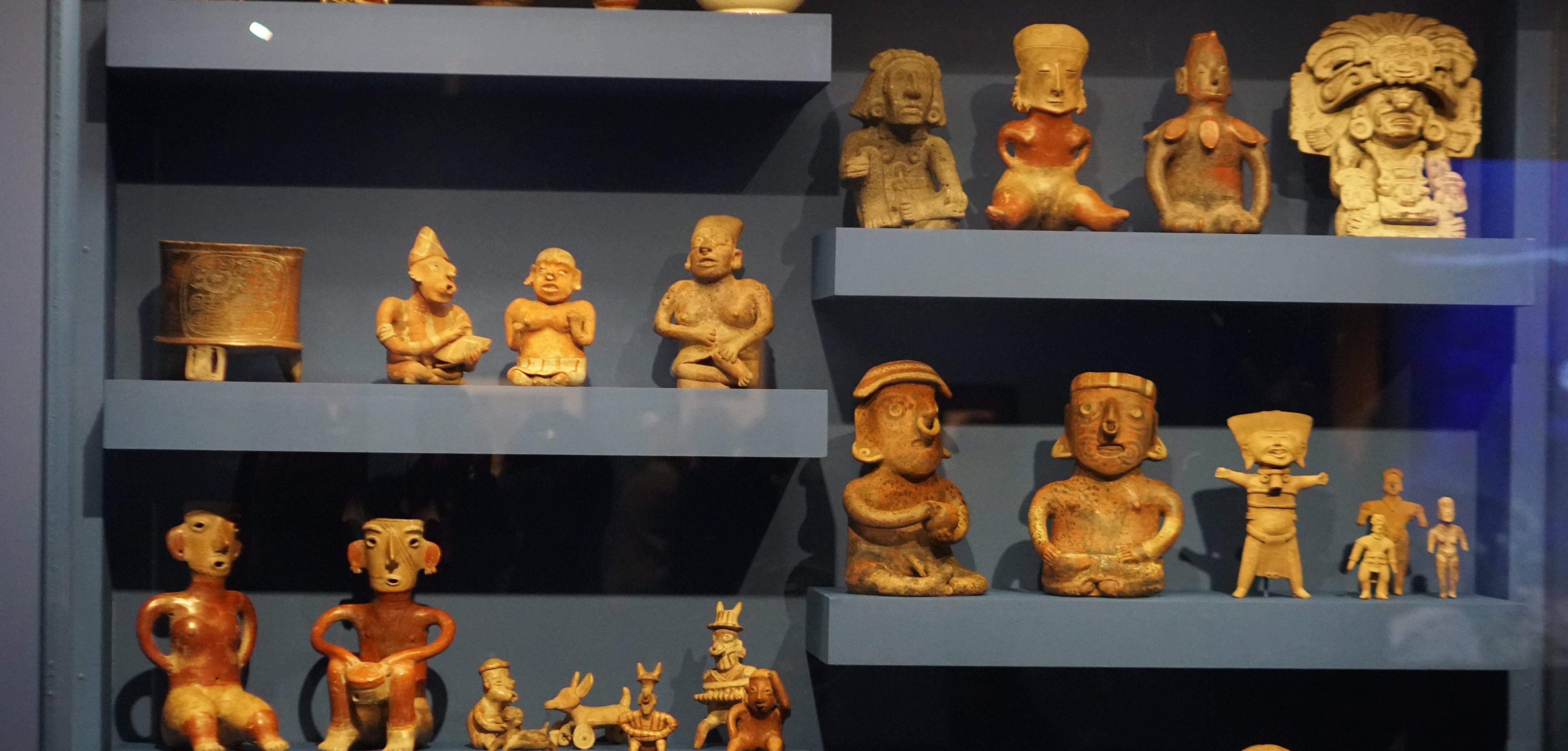
Ancient West Mexican Ceramics from Diego Rivera and Frida Kahlo’s Casa Azul in Mexico City. Photo by Diana Mena.
The most significant aspect of the exhibit it’s ability to remind individuals that Frida Kahlo was more than her art, she was a loving, caring, but broken individual. The exhibit shows you parts to an enigmatic figure that was more than outspoken and bold but also enjoyed the simpler things in life and was more than self-portraits and a disability.
“Frida Kahlo: Appearances Can Be Deceiving” at Brooklyn Museum [200 Eastern Pkwy., at Washington Avenue in Prospect Heights, www.brooklynmuseum.org, (718) 638-5000]. Running through May 12. Timed tickets $20–$25, untimed $35.


